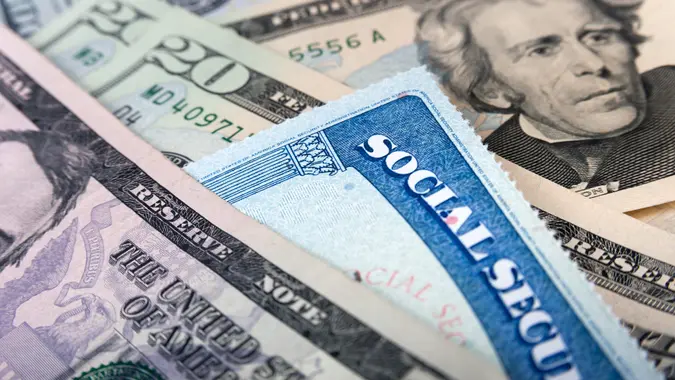5 Steps To Take When You’re Finally Ready To Retire

Commitment to Our Readers
GOBankingRates' editorial team is committed to bringing you unbiased reviews and information. We use data-driven methodologies to evaluate financial products and services - our reviews and ratings are not influenced by advertisers. You can read more about our editorial guidelines and our products and services review methodology.

20 Years
Helping You Live Richer

Reviewed
by Experts

Trusted by
Millions of Readers
You’ve worked hard — and saved hard — for 40+ years, and now it’s time to retire. Congratulations! You’re trading in your alarm clock for relaxing days of playing golf, gardening, travel or just spoiling the grandkids.
But you need to be cautious about how — and when — you spend so you can enjoy your retirement without running out of money. Here’s what you need to know.
1. Manage Your Expenses
The first thing to do when you retire is to get a handle on your expenses. Take an honest look at what you’re spending and where you can cut back if needed. It may take about six months of tracking your spending to determine how much you are spending in retirement.
2. Factor in Social Security and Pensions
The next step is to look at what you have coming in. This will include Social Security benefits and income from a pension if you’re lucky enough to have one.
The gap between what you’re spending and what is coming in will need to be bridged by your savings.
3. What To Spend First
You may have more than one type of retirement savings account. If so, you can maximize your spending by withdrawing money in the right order.
If you have non-qualified funds, meaning money that is not in a tax-advantaged retirement savings account like an IRA or 401k, consider spending that first. This allows your tax advantaged funds to continue to grow tax deferred until you need them. It may also lower your income tax burden as you’ll be paying capital gains taxes, not income taxes, on this money.
4. Spending Qualified Retirement Savings
Once you’ve exhausted your non-qualified assets (or spent as much as you feel comfortable with), it’s time to start spending those retirement monies. If you’re concerned about your income tax liability, start with your Roth assets. You’ve already paid income taxes on the money you put into these accounts, so you won’t pay taxes with you withdraw it.
The last ‘bucket’ of money you want to tap is your qualified, tax deferred accounts like your IRA or 401k. You’ll be taxed your regular income tax rate on these withdrawals, so waiting until you’re in the lowest tax bracket possible is a solid strategy.
5. What You Must Spend: Required Minimum Distributions
The IRS requires that you take some money out of your qualified accounts once you reach a certain age. Why? Because you didn’t pay any income taxes on that money when you invested it, and they want you to pay the taxes now, rather than passing it on to generation after generation.
Enter the Required Minimum Distribution, or RMD. This is the amount of money you are required to withdraw from your IRA or other retirement plan. It’s a calculation based on your age and your account balance at the end of the prior year. In 2023, the age at which you must take a required minimum distribution is 73. So if you turn 73 in 2024 (i.e., you were born in 1951), you must take an RMD in 2024 and each year for the rest of your life. Don’t skip this – the penalty for not taking an RMD that’s due is 50% of the RMD amount.
Keep in mind that these suggestions do not account for your preferences for your estate. If you want to leave money to your heirs, you may want to consult an estate planning attorney or financial advisor for this.
 Written by
Written by  Edited by
Edited by 

























